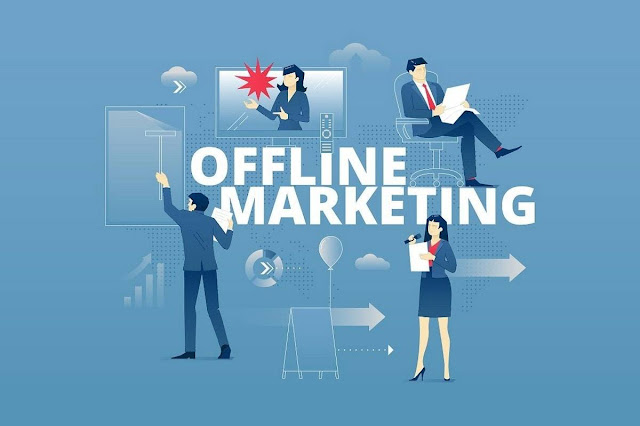- Get link
- X
- Other Apps
Offline marketing is any type of marketing that is not complete
through the internet. This includes a wide range of mediums and formats, such
as:
Out-of-home advertising: Billboards, bus ads, subway ads,
etc.
Print advertising: Newspapers, magazines, flyers, etc.
Television and radio commercials: TV and radio ads are a
classic form of offline marketing.
Direct mail: Letters, postcards, catalogs, etc.
Events: Sponsoring or participating in events, such as trade
shows, concerts, and festivals.
Public relations: Generating positive media coverage for
your business.
Offline marketing can be a very effective way to reach your
target spectators, especially if you are targeting people who are not as active
online. It can also be a good way to create a more memorable and engaging brand
knowledge.
Here are some of the benefits of offline marketing:
Reaches a wider audience: Offline marketing can reach people
who are not as active online, such as older adults and people in rural areas.
Can be more memorable: Offline marketing can be more
attention-grabbing and memorable than online marketing. For example, a
billboard or a TV commercial can be more likely to stick in people's minds than
a social media ad.
Can create a more immersive experience: Offline marketing
can provide a more immersive and interactive experience for customers. For
example, attending a trade show or participating in a contest can give
customers a chance to learn more about your products or services and interact
with your brand in person.
Of course, offline marketing also has some drawbacks:
Can be more expensive: Offline marketing campaigns can be
more expensive to produce and run than online marketing campaigns.
Can be less targeted: Offline marketing campaigns can be
less targeted than online marketing campaigns, since you cannot track who is
seeing your ads.
Can be more difficult to measure results: It can be additional
difficult to measure the effectiveness of offline marketing campaigns than
online marketing campaigns.
Overall, offline marketing can be a valuable tool for
businesses of all sizes. It can be a good way to reach a wider spectators,
create a more memorable brand experience, and provide customers with an
immersive experience.
Here are some examples of successful offline marketing
campaigns:
Old Spice: Old Spice's "The Man Your Man Could Smell
Like" campaign was a viral sensation that used online and offline
marketing to reach a wide audience. The campaign included TV commercials, print
ads, and social media posts.
Red Bull: Red Bull is known for its high-energy and exciting
marketing campaigns. The company has sponsored extreme sports events, produced
documentaries, and created viral videos.
Starbucks: Starbucks has a strong offline presence with its
iconic coffee shops and its popular loyalty program. The company also sponsors
events and partners with other businesses to reach its target audience.
If you are considering using offline marketing for your
business, there are a few things you should keep in mind:
Target your audience carefully: Choose offline marketing
channels that your board audience is likely to see and engage with.
Create high-quality content: Your offline marketing
materials should be visually appealing and informative.
Track your results: Even though it can be more difficult to
measure the effectiveness of offline marketing campaigns, it is important to
track your results so you can see what is working and what is not.
By following these tips, you can create offline marketing
campaigns that are effective and affordable.
What is an example of offline sales?
Offline sales are sales that are made in person, rather than
online. This includes sales made in brick-and-mortar stores, at trade shows,
and through door-to-door sales.
Here are some examples of offline sales:
Buying a new car from a dealership
Shopping for clothes at a department store
Ordering food at a restaurant
Going to a concert and buying merchandise
Attending a trade show and signing up for a free
consultation
Having a door-to-door salesperson sell you a new securitysystem
Offline sales can be more personal and engaging than online
sales. Customers have the opportunity to ask questions, try on products, and
get help from a salesperson. Offline sales can also be more effective for
businesses that sell high-value products or services.
Here are some of the benefits of offline sales:
More personal interaction: Customers can interact with
salespeople and get help in person.
More immersive experience: Customers can see, touch, and try
products before they buy them.
More opportunities for upselling and cross-selling:
Salespeople can offer customers additional products or services that they may
be interested in.
More opportunities to build relationships: Salespeople can
build relationships with customers and develop trust.
Of course, offline sales also have some drawbacks:
Higher costs: Offline sales can be more expensive than
online sales, due to the costs of maintaining a physical storefront and hiring
salespeople.
Less scalability: Offline sales can be more difficult to
scale than online sales, since businesses are limited by the number of physical
locations they have.
Less targeted: Offline sales can be less targeted than
online sales, since businesses cannot track who is entering their store or
attending their trade show booth.
Overall, offline sales can be a valuable tool for businesses
that want to provide customers with a more personal and engaging shopping
experience. Offline sales can also be effective for businesses that sell
high-value products or services.
- Get link
- X
- Other Apps
